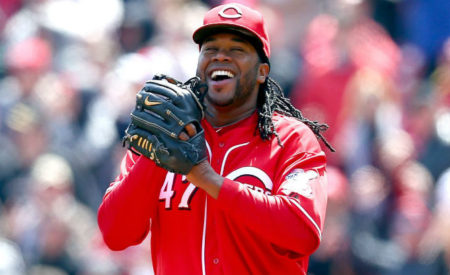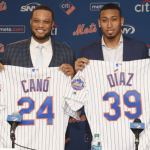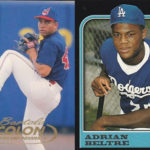How Johnny Cueto Pushed Me Away From Fantasy Baseball For Good
 The final 25-Man rosters are just about ready. From there, it’s time to break camp and hit the road for the start of the 2018 MLB season. How the new pace-of-play rules will play out remains to be seen, but one thing is for certain: Life will get back to normal for millions of people around this country.
The final 25-Man rosters are just about ready. From there, it’s time to break camp and hit the road for the start of the 2018 MLB season. How the new pace-of-play rules will play out remains to be seen, but one thing is for certain: Life will get back to normal for millions of people around this country.
The vendors and parking attendants, ushers and grounds crew, bartenders and wait staff—both in and around ballparks of every city the game is played—will collectively breathe a sigh of relief when umpires finally yell “Play ball!”
For readers of this website and countless others, the start of a new season means fantasy drafts will be conducted, lineups will be determined and the daily ritual of watching the transactions board, scouting for two-start pitchers and combing through box scores will begin again.
But that won’t be happening with me.
It does seem heretical that a baseball fan—especially one who writes for a fantasy-driven website—willingly forgoes the pleasure of being in a fantasy baseball league. The thrill of drafting an unknown prospect that later turns into a Jose Altuve or an Aaron Judge is hard to properly describe. The first time I was in a fantasy baseball league, that unheralded prospect was named Mariano Rivera, and I had him on my team. So, yes, I know what I’m missing in that regard.
I must have been involved in a hundred fantasy baseball leagues through the years: NL-Only Leagues, Keeper Leagues, Head-to-Head Leagues, I’ve probably done them all at one point or another. An AL-Only league was always a bridge too far for this Chicago Cubs fan, but I was always happy to bust out the latest draft guide and see who had changed teams in the offseason.
But all that came crashing to a halt, almost seven years ago.
In 2011, I drafted Johnny Cueto—then of the Cincinnati Reds—in one of the higher rounds of an online league. Johnny Cueto wasn’t quite right at the beginning of that season, so he missed the entire month of April. I kept him stashed in my bullpen, knowing that Johnny Cueto—even four or five month’s worth of him—can offer a fantasy pitching staff quite a boost. Besides, if I had cut him loose, someone would have picked him up, likely on the same day.
So, when Johnny Cueto was nearing his return, I was anxious to finally put him in and get a return for my patience. But when the date and time of his initial start was announced—Mother’s Day, May 8, at Wrigley Field—I wished it would have been anywhere else.
The question wasn’t whether Johnny Cueto would do well against the Jim Hendry-era Cubs. I knew he would be terrific that day. What bothered me was Cueto’s return came at the expense of a team I had followed from the days of Jose Cardenal and George Mitterwald. To give younger readers an idea of how long ago that was, TV sets in those days had two knobs on them, one for VHF and one for UHF. You can bring back vinyl records if you want to, but nobody’s longing for the day when Channel 58 comes back.
But I wanted to have Johnny Cueto back, so I started him that day. He went six innings plus, struck out four, walked one and collected the win. I was happy to pick up some fantasy points, but disappointed that my real-life team had served as the fodder. And I came to a realization: Whenever I had a fantasy team, that team was always going to come into conflict, at some point, with the team I’m emotionally invested in.
The most obvious example, on a daily basis, comes through the closers on any team. When a game is on the line, and your real-life team is trying to come back against your fantasy closer, can you leave him aside and lose a potential save? No, probably not. So do you hope for your closer to fail, perhaps give up a hit or two, walk a batter, and get saddled with a blown save and a loss, instead? I suppose that’s possible, but probably even less likely than the first option.
The path of least resistance is to bite the bullet, accept the fantasy points from a strikeout (or two), and put another save on the board for your team. But if the season comes down to the final week and your real-life team happens to be fighting for a wild-card spot, that game will loom much larger than it otherwise might.
At the end of that season, I decided—to paraphrase Satchel Paige—fantasy baseball wasn’t restful, at least not for me. The 2018 Cubs, at least in my mind’s eye, are more fully loaded than any fantasy team I could cobble together on my own. And if following them, to the exclusion of all other players and teams, means there’s an increase in late-night games on the West Coast that I don’t feel the need to watch anymore, that’s just how the rain delay unfolds. (Sorry, Cleveland Indians fans, but you’re probably used to that sort of comment by now.)


























